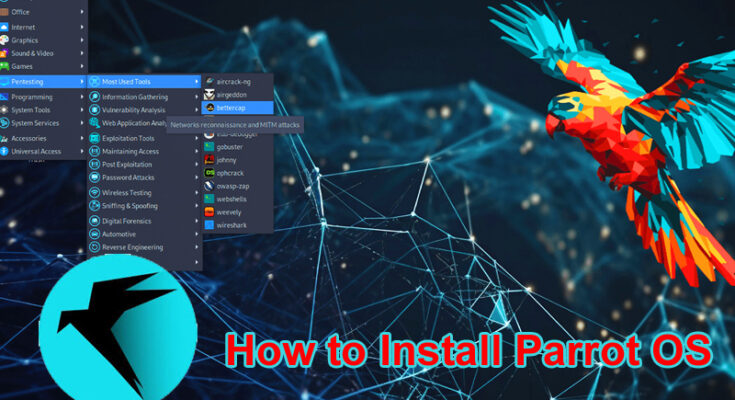Introduction Installing Parrot OS on an external SSD is an notable solution for the ones trying to run a Linux-based working machine with out disrupting the internal force in their primary device. In this guide, we’ll walk you through the way to install Parrot OS into an external SSD, protecting everything from preliminary setup to post-installation recommendations. This method presents greater portability and keeps your records separate and steady.
Table of Contents
What You’ll Need
Before we start, collect the following:
Parrot OS ISO File: Download the brand new model from the official Parrot OS internet site.
External SSD: Ensure it has enough storage (32GB minimum advocated).
Bootable USB Creator: Tools like Balena Etcher or Rufus work nicely for creating bootable USB drives.
A USB Drive: At least 8GB in size to create a bootable USB.
Step 1: Downloading Parrot OS
To installation Parrot OS into an outside SSD, start with the aid of downloading the cutting-edge Parrot OS ISO file from the legit website. Choose the correct model based totally on your needs—Home Edition for trendy use or Security Edition for moral hacking.
Step 2: Creating a Bootable USB
Creating a bootable USB is crucial in this manner, as it permits you to install Parrot OS at once onto the SSD. Here’s how:
- Connect the USB Drive: Plug it into your laptop.
- Open Your Bootable USB Tool: Select the Parrot OS ISO record.
- Configure the Tool: Set the USB drive because the goal tool, and verify.
- Start the Process: This may additionally take a couple of minutes, depending on the rate of your machine.
Step three: Connect and Prepare the External SSD
To set up Parrot OS into an outside SSD, connect your SSD thru USB in your pc. Double-test that the SSD is identified and that it has sufficient loose space.
Step 4: Configuring the BIOS
Restart your computer and get admission to the BIOS (generally via urgent F2, F10, or Delete during startup). Make positive to:
- Enable USB Boot: This ensures the system can boot from the USB force.
- Set Boot Priority: Place the USB drive as the first boot alternative.
- Disable Secure Boot (if wished): This can be important for Parrot OS to load nicely.
Step 5: Starting the Process
With the bootable USB prepared, we can start the Parrot OS set up system.
- Boot from USB: Once the machine acknowledges the USB, boot into the Parrot OS installer.
- Choose Install: Select the “Install” alternative at the Parrot OS startup display.
Step 6: Partitioning the External SSD
Partitioning is essential whilst installing Parrot OS into an external SSD:
- Select Manual Partitioning: For extra control, choose guide partitioning.
- Create Partitions:
- Root Partition (/): This have to be at the least 20GB.
- Swap Partition: Match this to your RAM length.
- Home Partition (/domestic): Allocate last space for person information.
Step 7: Proceeding with the Installation
Once partitions are set:
- Follow On-Screen Prompts: Complete the set up with the aid of getting into details like your timezone, username, and password.
- Confirm Installation Target: Ensure the external SSD is chosen to avoid overwriting inner storage.
- Begin Installation: This can also take several minutes, relying for your SSD and pc’s processing power.
Step 8: Finishing Up
After the installation completes:
- Eject the USB Drive: Remove the bootable USB.
- Set BIOS to Boot from SSD (Optional): Change the BIOS settings if you wish to automatically boot Parrot OS from the external SSD.
Post-Installation Tips for Running Parrot OS on an External SSD
- System Updates: Update Parrot OS frequently to preserve it steady and optimized.
- Data Backup: Store information backups either on the SSD or an additional external drive.
- Personalize Settings: Adjust system alternatives to optimize performance and usefulness.
Conclusion
Following these steps on how to install Parrot OS into an outside SSD allows for a flexible, portable Linux experience. By using an external SSD, you’ll enjoy both the safety of Linux and the ease of a separate garage tool. This manual is a great answer for all and sundry needing Parrot OS at the cross.




